




Sunday 26 February, 3pm Queen's Hall, Edinburgh

Brahms Violin Sonata No 2 in A Major, Op 100
Brahms Piano Trio No 1 in B Major, Op 8
Interval of 20 minutes
Brahms Piano Quintet in F minor, Op 34
Maxim Emelyanychev Piano

Aylen Pritchin Violin

Marcus Barcham Stevens Violin
Max Mandel Viola
Philip Higham Cello
Maxim Emelyanychev
The SCO is extremely grateful to the Scottish Government and to the City of Edinburgh Council for their continued support. We are also indebted to our Business Partners, all of the charitable trusts, foundations and lottery funders who support our projects, and to the very many individuals who are kind enough to give us financial support and who enable us to do so much. Each and every donation makes a difference and we truly appreciate it.
Core Funder Authority Learning Partner Benefactor Local Creative

Delivered by
 Su-a Lee
Sub-Principal Cello
Su-a Lee
Sub-Principal Cello
Diamond
Lucinda and Hew Bruce-Gardyne
Malcolm and Avril Gourlay
James and Felicity Ivory
Christine Lessels
Clair and Vincent Ryan
Alan and Sue Warner
Platinum
David Caldwell in memory of Ann
Tom and Alison Cunningham
John and Jane Griffiths
Judith and David Halkerston
J Douglas Home
Audrey Hopkins
David and Elizabeth Hudson
Dr and Mrs Peter Jackson
Dr Daniel Lamont
Chris and Gill Masters
Duncan and Una McGhie
Anne-Marie McQueen
James F Muirhead
Patrick and Susan Prenter
Mr and Mrs J Reid
Martin and Mairi Ritchie
Elaine Ross
Hilary E Ross
George Rubienski
Jill and Brian Sandford
Michael and Elizabeth Sudlow
Robert and Elizabeth Turcan
Tom and Natalie Usher
Anny and Bobby White
Finlay and Lynn Williamson
Ruth Woodburn
Lord Matthew Clarke
James and Caroline Denison-Pender
Andrew and Kirsty Desson
David and Sheila Ferrier
Chris and Claire Fletcher
James Friend
Iain Gow
Christopher and Kathleen Haddow
Ian Hutton
Gordon Kirk
Robert Mackay and Philip Whitley
Mike and Karen Mair
Anne McAlister and Philip Sawyer
Gavin McEwan
Roy and Svend McEwan-Brown
John and Liz Murphy
Alison and Stephen Rawles
Andrew Robinson
Ian S Swanson
John-Paul and Joanna Temperley
Anne Usher
Catherine Wilson
Neil and Philippa Woodcock
G M Wright
Bruce and Lynda Wyer
Silver
Roy Alexander
Joseph I Anderson
Pamela Andrews and Alan Norton
Dr Peter Armit
William Armstrong
Fiona and Neil Ballantyne
Timothy Barnes and Janet Sidaway
The Batsleer Family
Jack Bogle
Jane Borland
Michael and Jane Boyle
Mary Brady
Elizabeth Brittin
John Brownlie
Laura Buist
Robert Burns
Sheila Colvin
Lorn and Camilla Cowie
Lord and Lady Cullen of Whitekirk
Adam and Lesley Cumming
Jo and Christine Danbolt
Dr Wilma Dickson
James Dunbar-Nasmith
Dr and Mrs Alan Falconer
Sheila Ferguson
Dr James W E Forrester
Dr William Fortescue
Jeanette Gilchrist
David Gilmour
Dr David Grant
Margaret Green
Andrew Hadden
J Martin Haldane
Ronnie and Ann Hanna
Ruth Hannah
Robin Harding
Roderick Hart
Norman Hazelton
Ron and Evelynne Hill
Clephane Hume
Tim and Anna Ingold
David and Pamela Jenkins
Catherine Johnstone
Julie and Julian Keanie
Marty Kehoe
Professor Christopher and Mrs Alison Kelnar
Dr and Mrs Ian Laing
Janey and Barrie Lambie
Graham and Elma Leisk
Geoff Lewis
Dorothy A Lunt
Vincent Macaulay
Joan MacDonald
Isobel and Alan MacGillivary
Jo-Anna Marshall
James McClure in memory of Robert Duncan
Gavin McCrone
Michael McGarvie
Brian Miller
James and Helen Moir
Alistair Montgomerie
Margaret Mortimer and Ken Jobling
Andrew Murchison
Hugh and Gillian Nimmo
David and Tanya Parker
Hilary and Bruce Patrick
Maggie Peatfield
John Peutherer in memory of Audrey
Peutherer
James S Potter
Alastair Reid
Fiona Reith
Olivia Robinson
Catherine Steel
Ian Szymanski
Michael and Jane Boyle
Douglas and Sandra Tweddle
Margaretha Walker
James Wastle
C S Weir
Bill Welsh
Roderick Wylie
We believe the thrill of live orchestral music should be accessible to everyone, so we aim to keep the price of concert tickets as fair as possible. However, even if a performance were completely sold out, we would not cover the presentation costs.
We are indebted to everyone acknowledged here who gives philanthropic gifts to the SCO of £300 or greater each year, as well as those who prefer to remain anonymous. We are also incredibly thankful to the many individuals not listed who are kind enough to support the Orchestra financially, whether that is regularly or on an ad hoc basis. Every single donation makes a difference and we are truly grateful.
Become a regular donor, from as little as £5 a month, by contacting Mary Clayton on 0131 478 8369 or mary.clayton@sco.org.uk
Our Principal Conductor’s Circle is made up of individuals who share the SCO’s vision to bring the joy of music to as many people as possible. These individuals are a special part of our musical family, and their commitment and generosity benefit us all – musicians, audiences and creative learning participants alike. We would like to extend our grateful thanks to them for playing such a key part in the future of the SCO.
American Development Fund
Erik Lars Hansen and Vanessa C L Chang
Creative Learning Fund
David and Maria Cumming
Annual Fund
James and Patricia Cook
Hedley G Wright
Conductor Emeritus Joseph Swensen
Donald and Louise MacDonald
Chorus Director Gregory Batsleer
Anne McFarlane
Principal Second Violin
Marcus Barcham Stevens
Jo and Alison Elliot
Principal Viola Max Mandel
Kenneth and Martha Barker
Viola Steve King
Sir Ewan and Lady Brown
Principal Cello Philip Higham
The Thomas Family
Cello Donald Gillan
Professor Sue Lightman
Visiting Artists Fund
Colin and Sue Buchan
Anne and Matthew Richards
Productions Fund
The Usher Family
International Touring Fund
Gavin and Kate Gemmell
Cello Eric de Wit
Jasmine Macquaker Charitable Fund
Principal Double Bass Nikita Naumov
Caroline Hahn and Richard Neville-Towle
Principal Flute André Cebrián
Claire and Mark Urquhart
Principal Oboe Robin Williams
Hedley G Wright
Principal Clarinet Maximiliano Martín
Stuart and Alison Paul
Principal Bassoon Cerys Ambrose-Evans
Claire and Anthony Tait
Principal Timpani Louise Lewis Goodwin
Geoff and Mary Ball
Brahms (1833–1897)
Violin Sonata No 2 in A Major, Op 100 (1886)
Allegro amabile
Andante tranquillo — Vivace
Allegretto grazioso, quasi Andante
Piano Trio No 1 in B Major, Op 8 (1889)
Allegro con brio
Scherzo. Allegro molto
Adagio
Finale. Allegro
Piano Quintet in F minor, Op 34 (1864-5)
Allegro non troppo
Andante, un poco Adagio
Scherzo. Allegro
Finale. Poco sostenuto — Presto non troppo
The most significant event in the young Johannes Brahms’ career took place in October 1853. Fellow composer Robert Schumann – also editor of Europe’s most influental musical publication, the Neue Zeitschrift für Musik – hailed him in an article he entitled ‘New Paths’ as a genius, and the worthy successor to Beethoven. It was enormously flattering, and provided a huge boost to the younger composer’s burgeoning career.
But Schumann’s article also raised skyhigh expectations of the kind of music that Brahms would go on to compose. And it only added to the almost crippling sense that Brahms already had about his place in the great, centuries-old tradition of German and Austrian music, which stretched from Schütz and Bach to Haydn, Mozart, Beethoven – and maybe even himself.
It’s thought that Brahms destroyed around three quarters of the chamber music he composed, considering it simply not up to scratch, and not worthy of his name. The chamber pieces he allowed to survive, however, and even to be published, contain some of his most powerful and personal music – as the three pieces in today’s programme demonstrate.
By the time Brahms came to write his Violin Sonata No 2 – in 1886, as a 53-year-old – he had symphonies, concertos, several other chamber works and a wealth of piano music under his belt. With his reputation well established, he was more relaxed about releasing music into the public realm.
And, possibly, slightly more relaxed about what that music was like. The Second Violin
Sonata is one of Brahms’ most enduringly carefree, sunny pieces, relaxed and contented almost from start to finish. That unusually (for Brahms, at least) optimistic, cheerful mood may well have had quite a bit to do with the circumstances of the Sonata’s creation.

Brahms was spending the summer of 1886 in the idyllic Swiss village of Hofstetten, on the shores of Lake Thun, where he rented a charming chalet adorned with flowers at every window. There, he received a succession of admiring visitors, including Swiss pastor and poet Joseph Viktor Widmann, and fellow poet Klaus Groth (several of whose works Brahms would set to music). Most inspiring of all, however, were the visits he received from the rising German contralto Hermine Spies, who was somewhat in awe of the composer, and to whom the composer felt fondness and attraction in return. Brahms would write
several of his late songs for Spies, and some of those songs’ melodies found their way –often in adapted form – into the textures of his Second Violin Sonata. According to his early biographer Max Kalbeck, it was anticipation of Spies’s visits that specifically inspired the Sonata’s creation.
Perhaps appropriately, there’s a distinctive yearning quality to the Sonata’s song-like opening theme, first heard on piano, with the violin merely supplying brief comments before taking over the theme completely. Similarly, the piano introduces the first movement’s second main theme, over a rippling accompaniment, before the violin takes it on. The whole movement has a generally laid-back character, with the only passing shade coming from a more serious melody with a distinctive insistent repeated note, which comes to dominate the central part of the movement.
TheSecondViolinSonata isoneofBrahms’smost enduringlycarefree, sunnypieces,relaxedand contentedalmostfrom starttofinish.Johannes Brahms
Brahms almost gives us four movements for the price of three: he combines thoughtful slow movement and playful scherzo in his second movement. It contrasts gentle, pensive music in which the two players wind together elegant, slow-moving melodies with quick, more mercurial, dance-like passages, the two elements cunningly combined so that one always seems the answer to the other.
Brahms rounds his Sonata off with a surprisingly mellow finale based around a particularly rich violin theme, often played entirely on the instrument’s lowest string, giving it a distinctively burnished, grainy sound.
With Brahms’ Piano Trio No 1, we return very much to the beginning: it was the first chamber work by the composer to be published. He completed it in January 1854, at the age of 20, just a few months after Schumann’s career-defining article. But almost as soon as he’d sent it off to his publisher, Brahms confessed to his friend Joseph Joachim that he wasn’t entirely happy with the piece.
Despite subsequent publication and performances of the Trio, those niggles clearly remained in Brahms’ mind. A remarkable 35 years later, the now 56-yearold composer turned his attention back to the Trio in 1889, and set about revising it. As he explained to his close friend and confidante Clara Schumann (widow of Robert, who had died in 1856), this was to make the piece ‘not as dreary as before’. He continued: ‘I didn’t provide it with a new wig, just combed and arranged its hair a little.’
the third movement remained untouched, and he shortened the work by around a third. What he ended up with was so different, in fact, that he republished the work as his Op 108, while allowing his original version (as his Op 8) to continue its own separate life. It’s almost always Brahms’ revised and shortened version of 1889 that’s performed today.
The Piano Trio’s first movement opens with an arching theme on the cello, but Brahms makes us wait a surprisingly long time before introducing the violin. Together, however, his three instruments build to a sonorous climax before moving on to a quieter, more restrained second theme – which itself builds to increasingly gruff, impassioned music. A scampering, hushed theme is tossed between all three instruments in Brahms’ playful scherzo of a second movement, with a contrasting slower, more lyrical central section, which nonetheless retains the opening music’s distinctive rhythm in the piano’s bassline.
Brahms’ slow third movement seems to hover, almost motionless, with piano and strings initially separated as if pondering their own distinct sonic identities. Unusually, the composer shifts from brighter B major to darker B minor for his finale, making his First Piano Trio one of the few classical pieces to make that major-to-minor move (Mendelssohn’s ‘Italian’ Symphony is another). That said, Brahms keeps us guessing as to which key we’re really in until almost the very end of the movement, in music that remains restless and unstable, perpetually groping its way towards resolution.
Brahms was underselling things. His changes to the Trio were substantial – only
The Piano Quintet had a far stormier, more turbulent genesis. It began life in 1862 as a string quintet, which the composer sent
(unfinished) to Clara Schumann. She adored it. ‘I can’t tell you how moved I am by it,’ she wrote to him, ‘and how powerfully gripped.’ That other influential figure in Brahms’ life, violinist Joseph Joachim, was equally impressed, calling it ‘a piece of the greatest significance, full of masculine strength and sweeping design’.

That was at first, however. Once Joachim had examined the music in more detail, and played it through a few times, he began to have his doubts. Was a quintet of stringed instruments really the right setting for Brahms’ thrusting, powerful, muscular music?

Brahms thanked Joachim for his feedback, destroyed his quintet version, and recast the music as a Sonata for Two Pianos. Surely the attack, the power and the mighty resonances of the pair of keyboard instruments would
be able to convey his music more effectively? He even went as far as performing his new version in public, joined by fellow pianist Carl Tausig, early in 1864. Now, however, it was Clara Schumann’s turn to be shocked. Her concerns were that the work’s intricate, interweaving lines would be lost amid the very similar sonorities of the two pianos. In any case, she had bigger ideas for the piece: ‘It is not a sonata, rather a work whose ideas you could – and should – distribute among the whole orchestra, as though out of a horn of plenty!’
Brahms wasn’t so sure he’d go that far. Nonetheless, he bowed again to what he considered the greater insights of his friends, and created a third version of the piece. This time, however, he came up with an amalgamation of his two earlier ideas, retaining the power and resonance of one of his earlier pianos, but also reintroducing
Joseph Joachim Clara SchumannBrahmssaveshismostchallengingmusic,however,for thedissonant,sombreopeningofhisfinale,inwhichall fiveinstrumentsseemtobegropingtowardssomesense ofstabilityorevenpurpose.
his string players – now four of them, rather than five.
In many ways, it’s understandable that there were so many questions over an appropriate instrumentation for what’s undeniably one of Brahms’ most turbulent, smouldering and consistently dark works. Despite its calm unison opening, the first movement’s main theme quickly surges across all five players, growing increasingly tormented. It later gives rise to a succession of subsidiary themes, almost as if the five instruments are attempting to work through the implications of the stormy music they’ve unleashed.
After the restless agitation of the first movement, there’s a sense of genuine calm, even consolation, to the slow second movement, with an almost vocal feeling to the unusual, speech-like rhythm of the piano’s opening melody, as though the instrument
might actually be talking to us. The drama – though now more restrained – returns in the dark scherzo of the third movement, whose scuttling, sinister introduction over an insistent cello heartbeat quickly erupts into the movement’s grandiose main theme.
Brahms saves his most challenging music, however, for the dissonant, sombre opening of his finale, in which all five instruments seem to be groping towards some sense of stability or even purpose. The cello brings things firmly into focus, however, when it introduces the movement’s main recurring theme, and the other instruments take enormous pleasure in flipping the melody upside down, breaking it into pieces, and tossing it back and forth between each other, driving the Quintet to an increasingly urgent, sonorous conclusion.
© David Kettle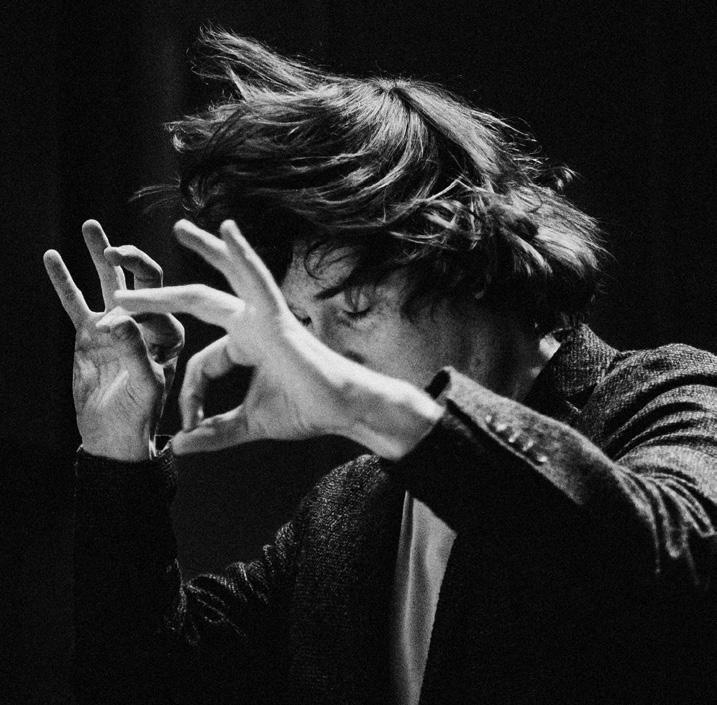
At the Scottish Chamber Orchestra Maxim Emelyanychev follows in the footsteps of just five previous Principal Conductors in the Orchestra’s 48-year history; Roderick Brydon (1974-1983), Jukka-Pekka Saraste (1987-1991), Ivor Bolton (1994-1996), Joseph Swensen (1996-2005) and Robin Ticciati (2009-2018).
Highlights of his 2021/22 season included debuts with some of the most prestigious international orchestras: Accademia Nazionale di Santa Cecilia, Royal Concertgebouw Orchestra, Rotterdam Philharmonic, Deutsches Symphonie-Orchester, Toronto Symphony and Swedish Radio Symphony Orchestra, and returns to the Antwerp Symphony, the Orchestre National du Capitole de Toulouse, the Royal Liverpool Philharmonic and a European tour with the Scottish Chamber Orchestra, followed by appearances to the Radio-France Montpellier Festival and the Edinburgh International Festival.
In October 2022, Maxim toured the USA with the Scottish Chamber Orchestra and made his debut with the Berlin Philharmonic. Other touring in 2022/23 includes the New Japan Philharmonic, the Osaka Kansai Philharmonic, the Bergen Philharmonic Orchestra, the Helsinki Radio Symphony Orchestra, the Czech Philharmonic Orchestra, the Rotterdam Philharmonic Orchestra. He also returns to the Orchestre National du Capitole de Toulouse and to the Royal Opera House in Mozart's Die Zauberflöte.
He regularly collaborates with renowned artists such as Max Emanuel Cenčić, Patrizia Ciofi, Joyce DiDonato, Franco Fagioli, Richard Goode, Sophie Karthäuser, Stephen Hough, Katia and Marielle Labèque, Marie-Nicole Lemieux, Julia Lezhneva, Alexei Lubimov, Riccardo Minasi, Xavier Sabata and Dmitry Sinkovsky.
Maxim is also a highly respected chamber musician. His most recent recording, of Brahms
Violin Sonatas with long-time collaborator and friend Aylen Pritchin, was released on Aparté in December 2021 and has attracted outstanding reviews internationally. With the Scottish Chamber Orchestra, Maxim has recorded the Schubert Symphony No 9 – the symphony with which he made his debut with the orchestra – which was released on Linn Records in November 2019.
For full biography please visit sco.org.uk
Russian violinist Aylen Pritchin has, in recent years, firmly established himself as one of the most interesting and versatile rising stars on the international concert stage.
Born in Saint Petersburg, Aylen studied with Pr. Elena Zaitseva in his hometown and with Pr. Eduard Grach at the prestigious Tchaikovsky Conservatory in Moscow. In 2014, Aylen was awarded at the Long-Thibaud International Competition First Prize and he is a former major prize winner at the Wieniawski, Tchaikovsky, Sion-Valais, Kreisler and Oistrakh International Violin Competitions.
His career has led him to perform in Russia and abroad, including Armenia, Belgium, Bulgaria, Czech Republic, France, Germany, Israel, Italy, Netherlands, Poland, Switlzerland, Vietnam and Japan; In such prestigious venues as the Vienna Konzerthaus, Amsterdam Concertgebouw, Stockholm Musikaliska, Salzburg Mozarteum, Tchaikovsky Conservatory Hall in Moscow and the Champs-Elysées Theatre in Paris.
Highlights of the 2022/23 season include Aylen’s debut with the Scottish Chamber Orchestra under their Principal conductor Maxim Emelyanychev in Edinburgh and Glasgow. He embarks on a tour in Asia with two more debuts: the Hiroshima Symphony Orchestra under the direction of Christian Arming and the Hong Kong Sinfonietta and Yip Wing-sie. Recitals include a performance at the Hong Kong Concert Hall in a Beethoven-Richard Strauss program with pianist Rémi Geniet, as well as at the Tokyo’s Toppan Hall in a Medtner, Janáček, Ravel, Enescu program with pianist Tomoki Kitamura. In August 2023 he will join Maxim Emelyanychev for a performance at the Dubrovnik International Festival.
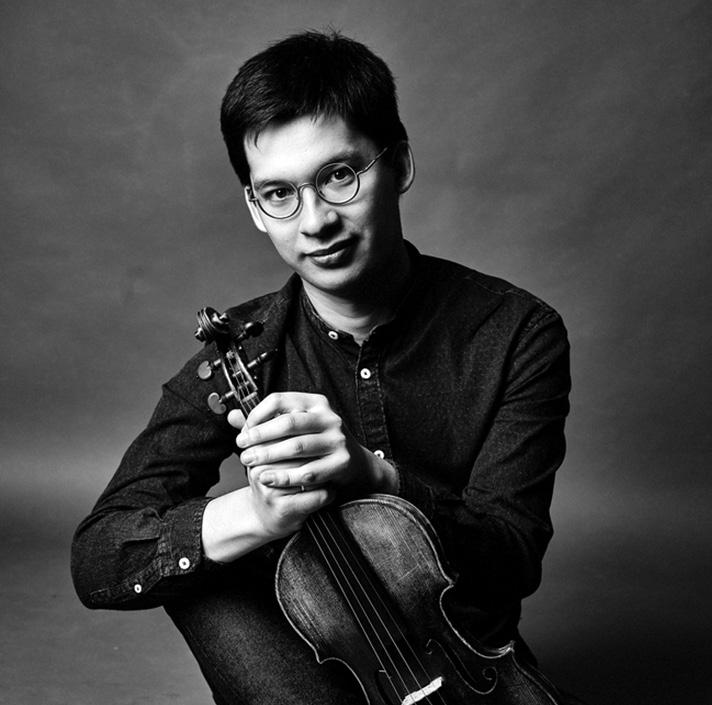
Aylen equally enjoys playing chamber music with artists such as Maxim Emelyanychev, Lukas Geniusas, Yury Favorin, Alexander Melnikov, Maxim Rysanov, Vladimir Mendelssohn and David Geringas.
For full biography please visit sco.org.uk
Marcus first played with the SCO in 2015 and joined in 2016. He is also co-leader of the Britten Sinfonia since 2013, was in the Fitzwilliam String Quartet for 7 years and recorded with them CDs of late quartets by Schubert and Shostakovich.
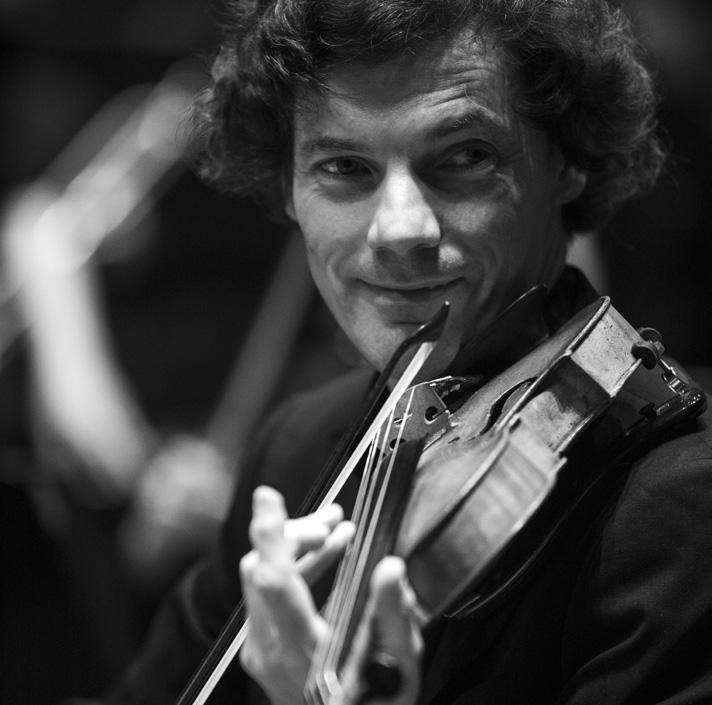
He has been invited as guest leader to the City of Birmingham Symphony Orchestra, Orchestra of the Age of Enlightenment, Aurora Orchestra and Royal Liverpool Philharmonic Orchestra, and played as Principal 2nd violin for Sir John Eliot Gardiner's Orchestre Révolutionnaire et Romantique.
As well as being broadcast as a soloist on BBC Radio 3, Marcus has enjoyed playing with groups including the Nash Ensemble, Arcangelo, King's Consort, Ensemble Modern, and the Birmingham Contemporary Music Group.
He also plays regularly with his wife, Scottish pianist Christina Lawrie. In March 2020, Christina and Marcus started their own concert series #ConcertFromOurLivingRoom. in which they perform fortnightly online concerts.
Marcus is also a composer and his piece "Dhyana" for soprano and Chroma ensemble was described as "hugely impressive" (George Hall, Guardian, 2011). He has written string quartets based on Purcell Fantasias for the Fitzwilliam String Quartet and choral anthems performed by Ex Cathedra choir.
Marcus's Chair is kindly supported by Jo and Alison Elliot
Violist Max Mandel enjoys a varied and acclaimed career as a chamber musician, soloist, orchestral musician and speaker.
Principal Viola of The Scottish Chamber Orchestra and The Orchestra of the Age of Enlightenment he is a also a member of the trailblazing ensemble FLUX Quartet and the Mozart specialists Spunicunifait.
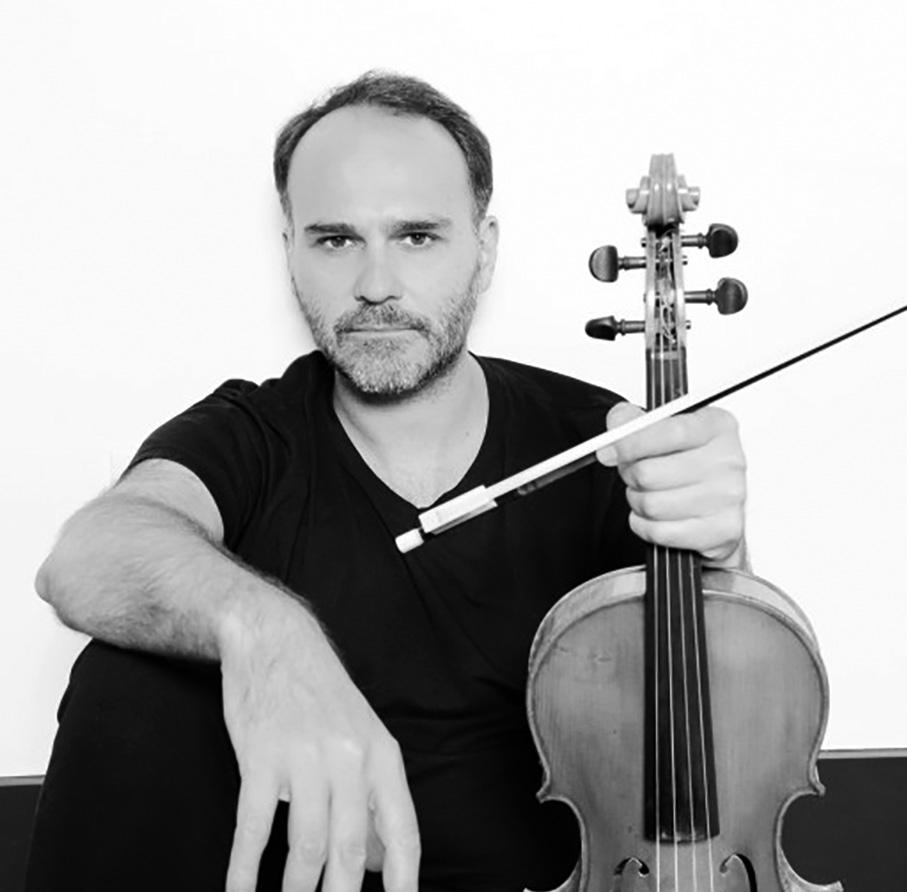
He has appeared as guest Principal Viola with The London Symphony Orchestra, The Chamber Orchestra of Europe, The Australian Chamber Orchestra, The Academy of Ancient Music, and the Handel & Haydn Society amongst others. Other group affiliations include The Smithsonian Chamber Players, Tafelmusik Baroque Orchestra and The Silk Road Ensemble.
Recent recordings include Toshi Ichiyanagi String Quartets with FLUX on Camerata Records and Mozart’s Sinfonia Concertante with violinist Aisslinn Nosky and the Handel & Haydn Society Orchestra on Coro Records.
Born and raised in Toronto, Canada he lives in London.
Max's Chair is kindly supported by Kenneth and Martha Barker
Born in Edinburgh, Philip studied with Ruth Beauchamp at St Mary's Music School and subsequently at the RNCM with Emma Ferrand and Ralph Kirshbaum. He also enjoyed mentoring from Steven Isserlis. In 2008 he became the first UK cellist to win 1st Prize in the Bach Leipzig competition, and followed it with major prizes in 2009 Lutosławski Competition, and the 2010 Grand Prix Emmanuel Feuermann in Berlin. He was selected for representation by Young Classical Artist Trust between 2009 and 2014.

He has appeared as soloist with the Philharmonia Orchestra, the Hallé Orchestra (broadcast by BBC Radio 3), the Royal Northern Sinfonia and Bournemouth Symphony Orchestra, as well as the SCO. He has given recitals at the Wigmore Hall, Brighton Festival and Lichfield Festival, and further afield in Germany, Istanbul and Washington DC. In 2014 he performed the complete Bach Suites in Tokyo at the Musashino Cultural Foundation, and again at Wigmore Hall in 2017.
Philip has been described as ‘possessing that rare combination of refined technique with subtle and expressive musicianship… all the qualities of a world-class artist’ (The Strad), and has been praised for his ‘expansive but tender playing’ (Gramophone). His debut recording of the Britten Solo Suites (Delphian, 2013) was named instrumental disc of the month in both Gramophone and BBC Music magazines. He has also recently released the complete Bach Suites, to critical acclaim.
Philip was appointed Principal Cello of the Scottish Chamber Orchestra in 2016. He plays a fine Milanese cello by Carlo Giuseppe Testore, made in 1697, and is grateful for continued support from Harriet's Trust.
Philip's Chair is kindly supported by The Thomas Family
The internationally celebrated Scottish Chamber Orchestra is one of Scotland’s National Performing Companies.
Formed in 1974 and core funded by the Scottish Government, the SCO aims to provide as many opportunities as possible for people to hear great music by touring the length and breadth of Scotland, appearing regularly at major national and international festivals and by touring internationally as proud ambassadors for Scottish cultural excellence.
Making a significant contribution to Scottish life beyond the concert platform, the Orchestra works in schools, universities, colleges, hospitals, care homes, places of work and community centres through its extensive Creative Learning programme. The SCO is also proud to engage with online audiences across the globe via its innovative Digital Season.
An exciting new chapter for the SCO began in September 2019 with the arrival of dynamic young conductor Maxim Emelyanychev as the Orchestra’s Principal Conductor.
The SCO and Emelyanychev released their first album together (Linn Records) in November 2019 to widespread critical acclaim. The repertoire - Schubert’s Symphony No. 9 in C major ‘The Great’ –is the first symphony Emelyanychev performed with the Orchestra in March 2018.
The SCO also has long-standing associations with many eminent guest conductors including Conductor Emeritus Joseph Swensen, François Leleux, Pekka Kuusisto, Richard Egarr, Andrew Manze and John Storgårds.
The Orchestra enjoys close relationships with many leading composers and has commissioned almost 200 new works, including pieces by the late Sir Peter Maxwell Davies, Sir James MacMillan, Sally Beamish, Martin Suckling, Einojuhani Rautavaara, Karin Rehnqvist, Mark-Anthony Turnage, Nico Muhly, Anna Clyne and Associate Composer Jay Capperauld.
For full biography please visit sco.org.uk




Generations of our clients have trusted us to help build and preserve their wealth.

For over 250 years, they have relied on our expert experience to help make sense of a changing world. During that time we’ve earned an enviable reputation for a truly personal approach to managing wealth.


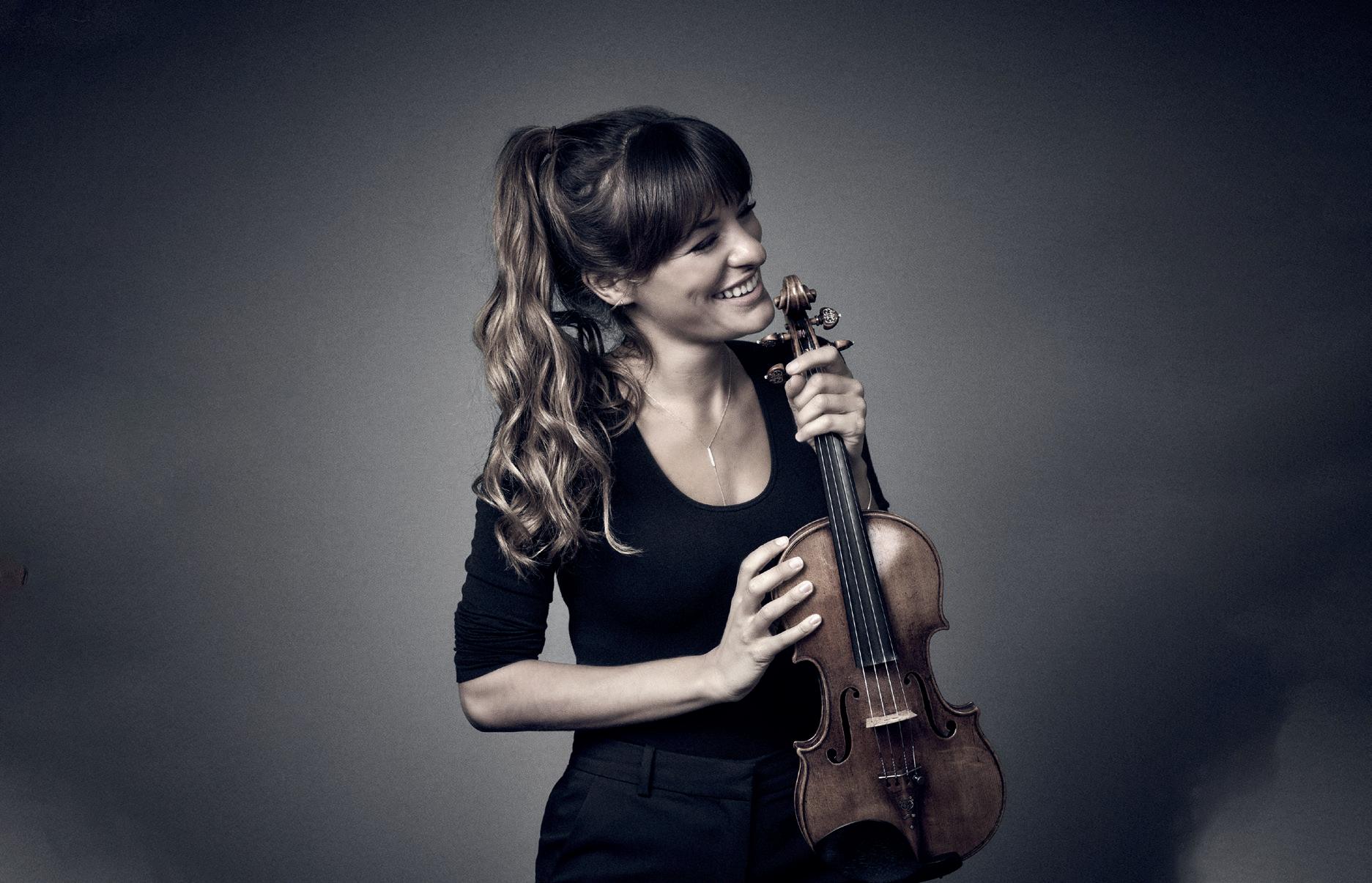
For those with over £250,000 to invest we o er a dedicated investment manager, with a cost structure and level of service, that generates exceptional client loyalty.


Find out more about investing with us today: Murray Clark at our Edinburgh o ce on 0131 221 8500, Gordon Ferguson at our Glasgow o ce on 0141 222 4000 or visit www.quiltercheviot.com



A warm welcome to everyone who has recently joined our family of donors, and a big thank you to everyone who is helping to secure our future.
Monthly or annual contributions from our donors make a real difference to the SCO’s ability to budget and plan ahead with more confidence. Each and every contribution is crucial, and your support is truly appreciated.
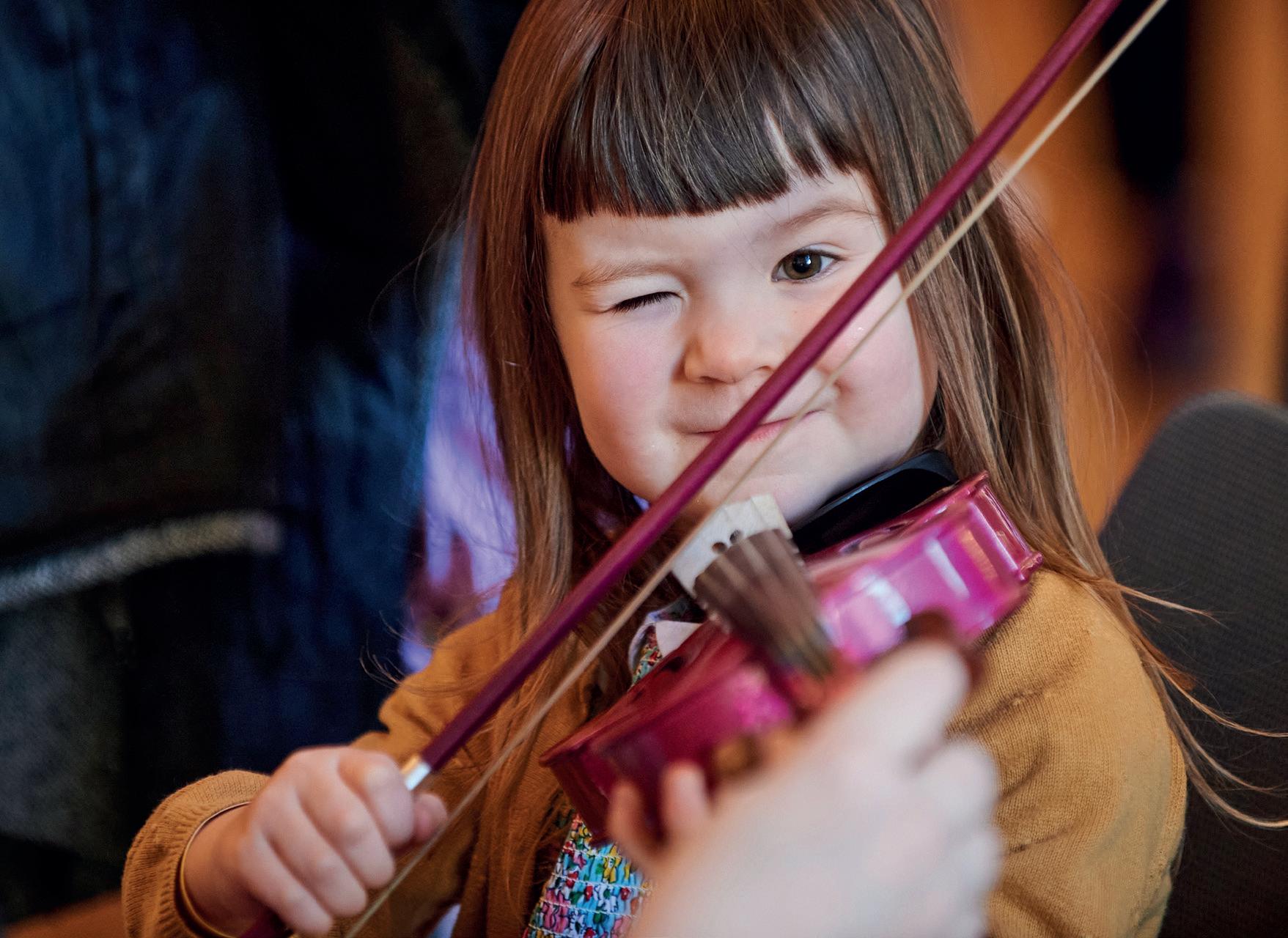
For more information on how you can become a regular donor, please get in touch with Mary Clayton on 0131 478 8369 or email mary.clayton@sco.org.uk.
SCO.ORG.UK/SUPPORT-US